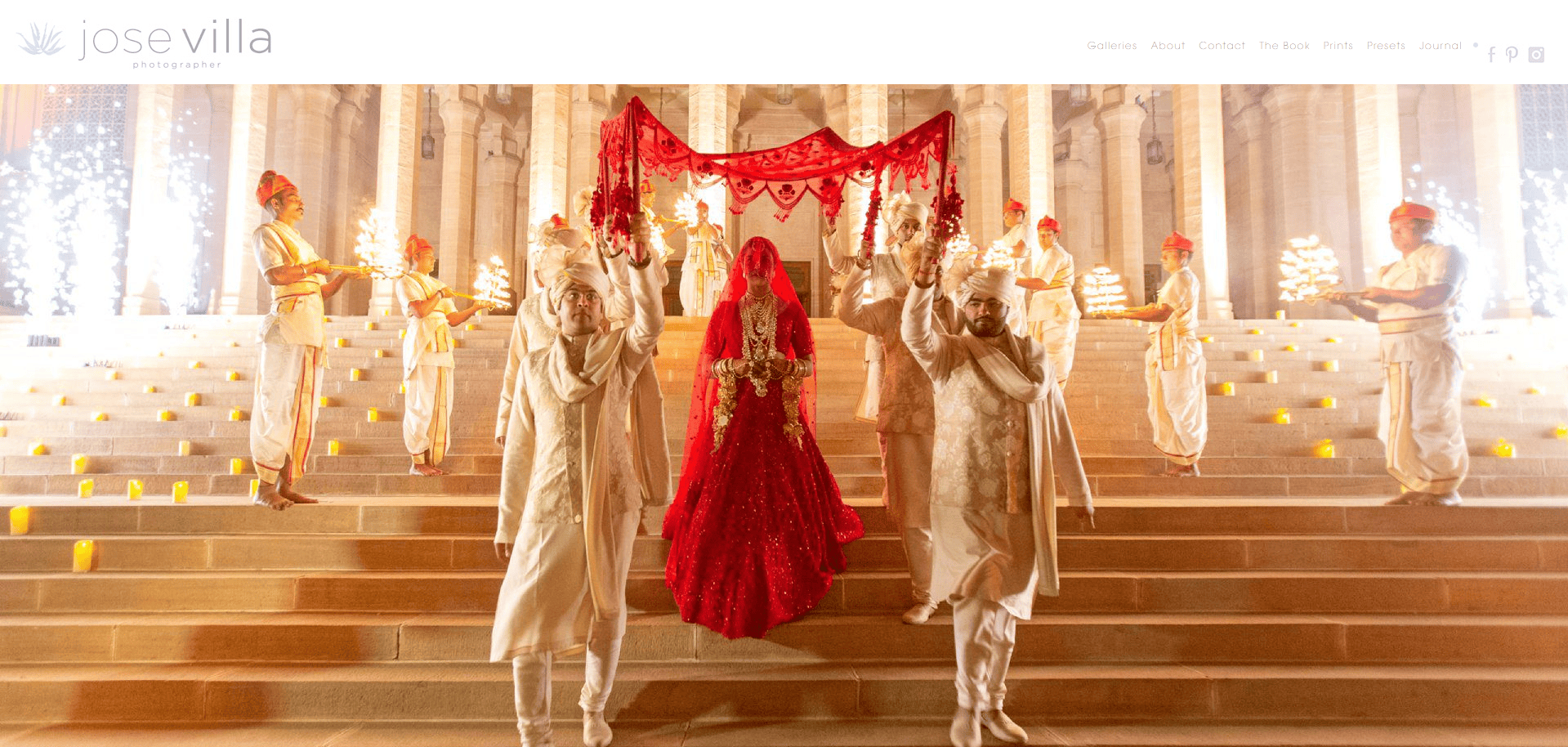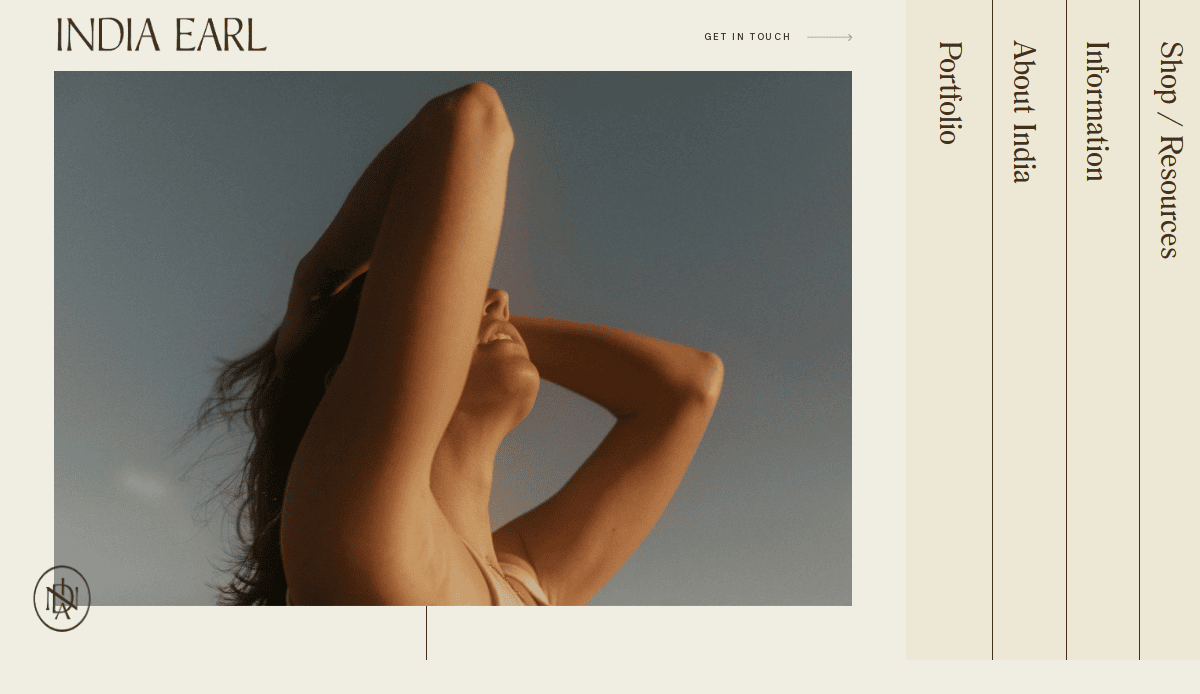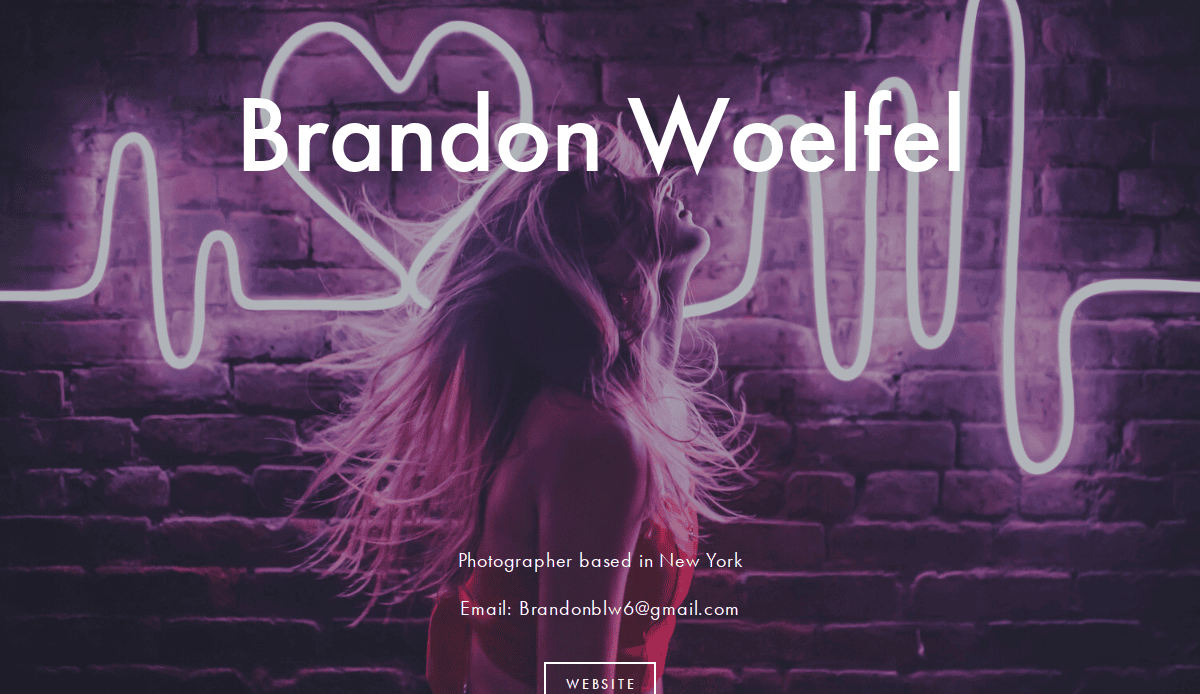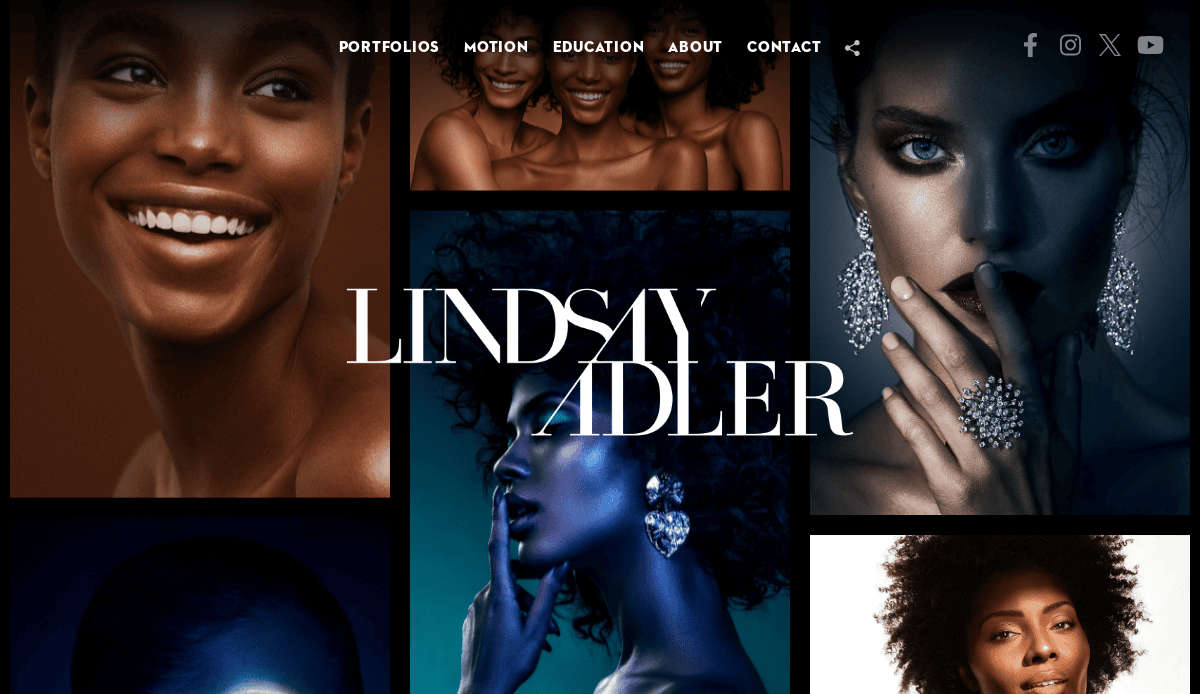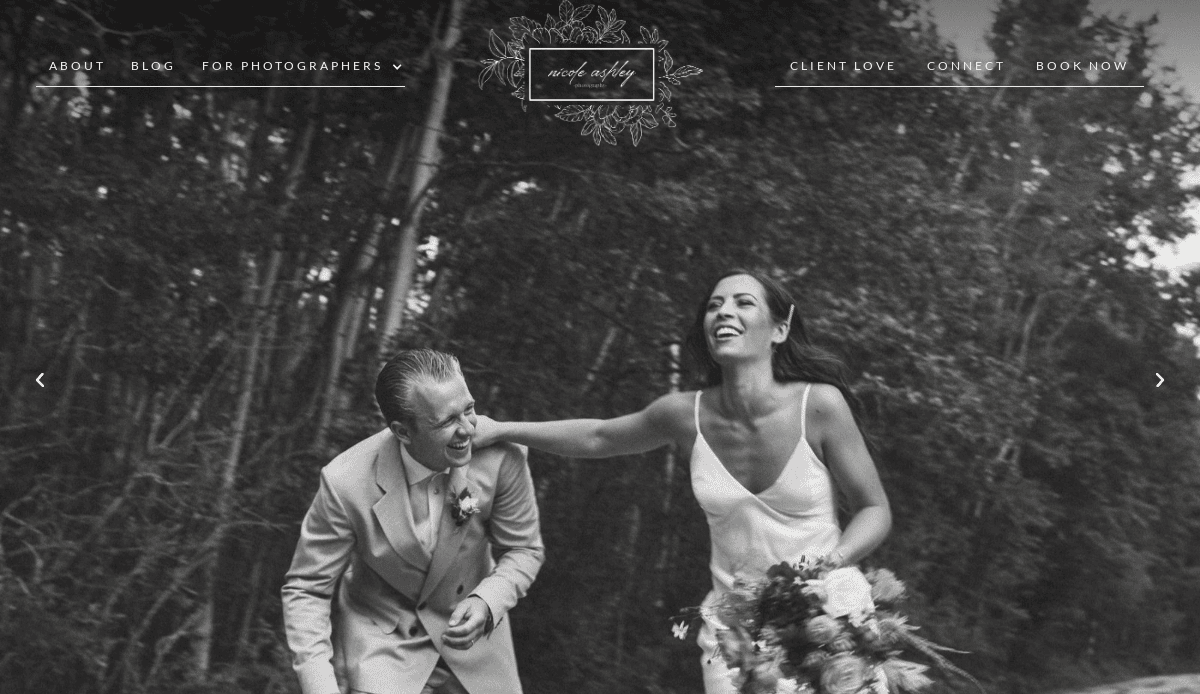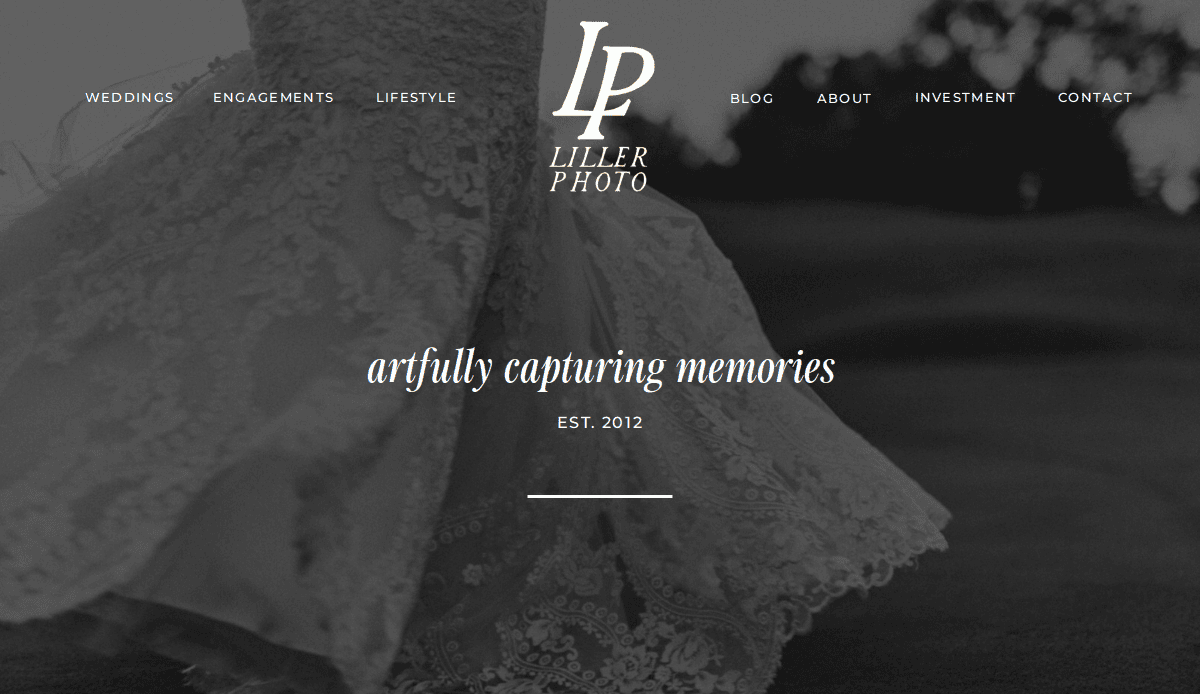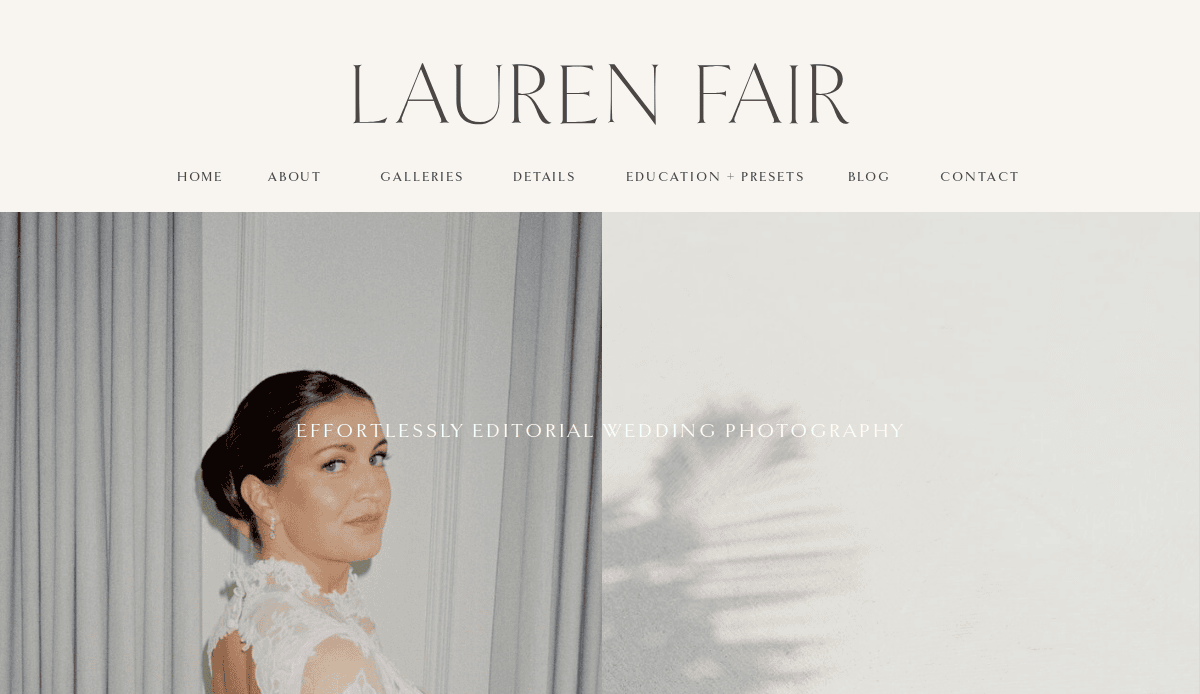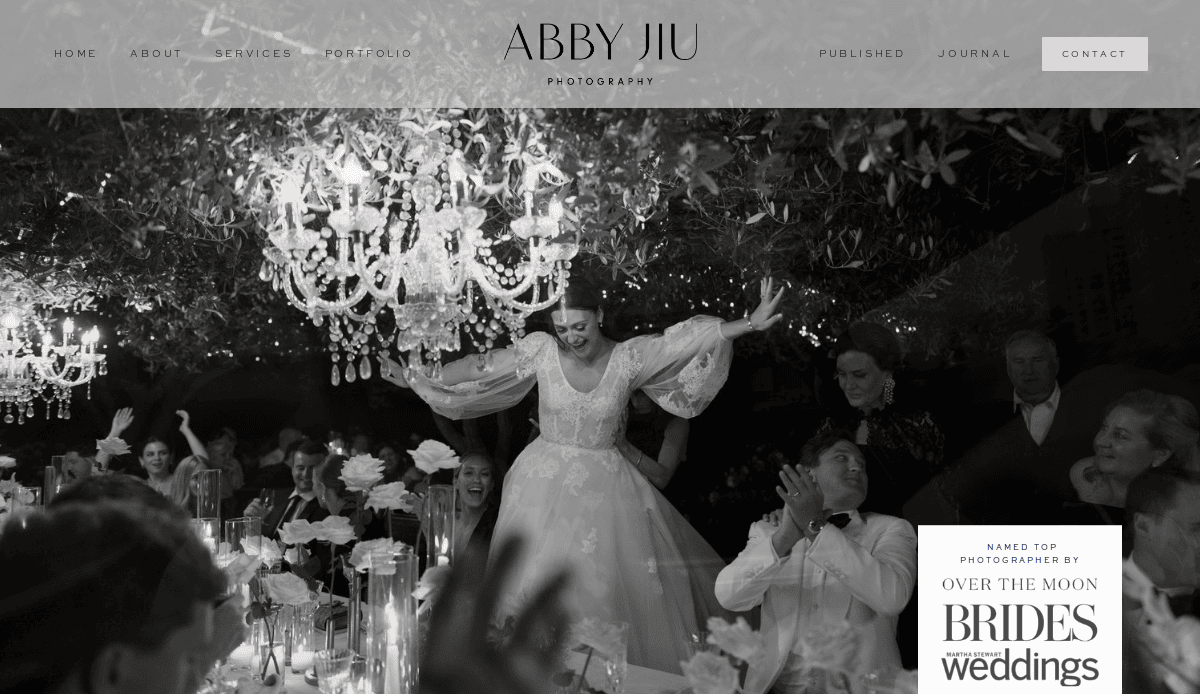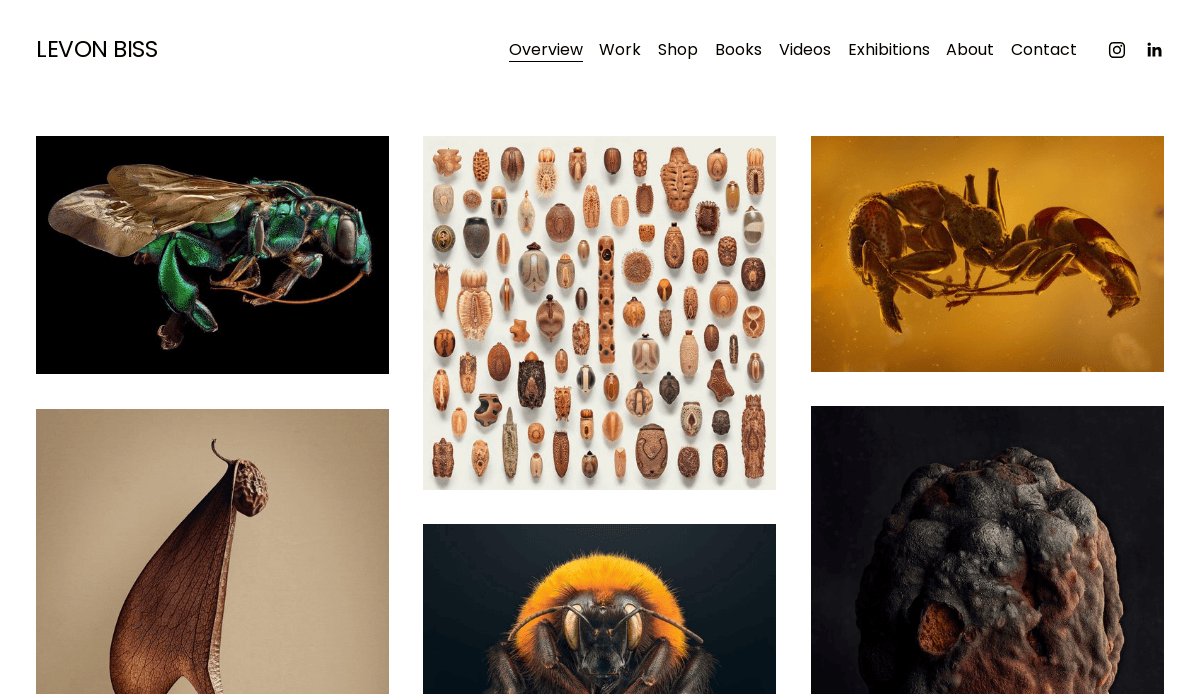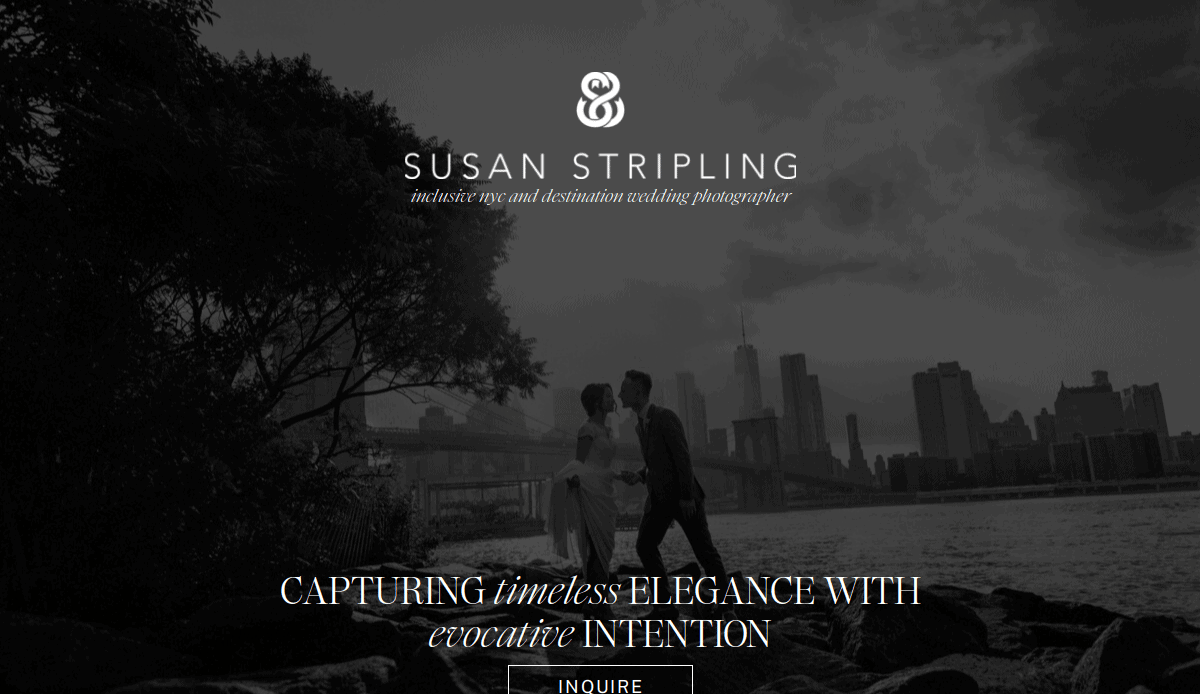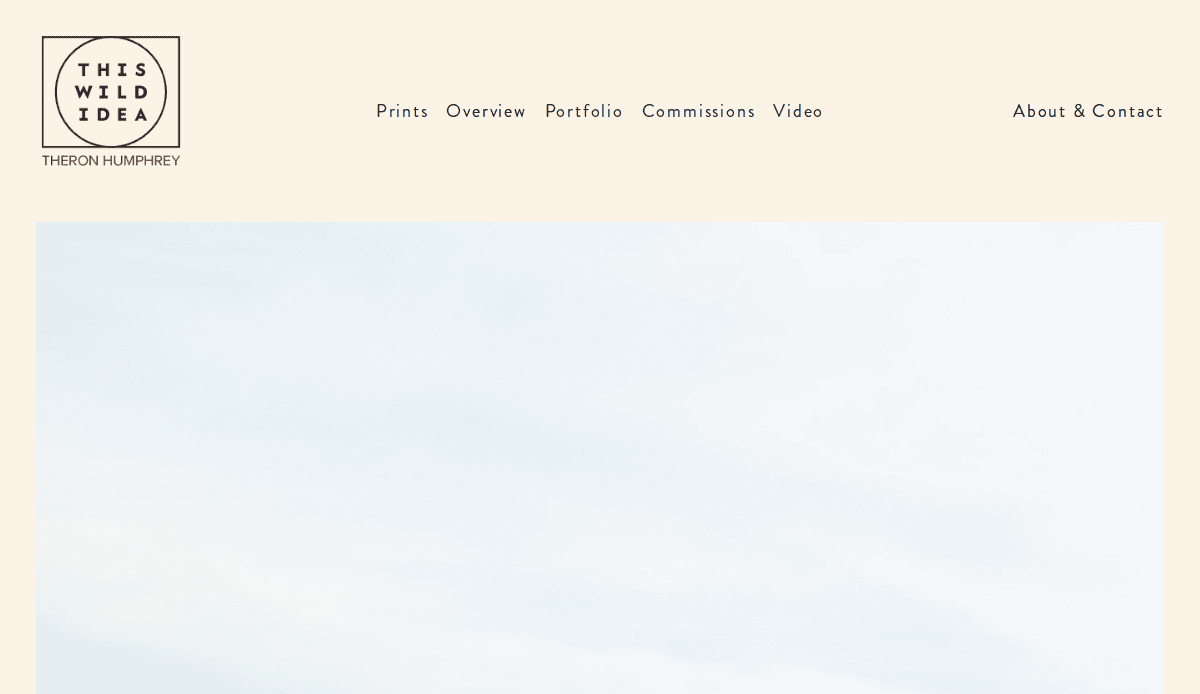Just looking for our Best Photography Website examples list?
Why Photography Website Design Matters
Your website isn’t just a digital portfolio—it’s your storefront, sales pitch, and brand ambassador rolled into one. Whether you’re shooting weddings, portraits, or commercial projects, a high-performing website can be the deciding factor between a potential client reaching out or bouncing off to a competitor.
But here’s the catch: great photography alone isn’t enough.
Today’s most successful photographers are investing in strategic website design that exhibits their work and converts visitors into paying clients. That means streamlined direction, mobile responsiveness, lightning-fast loading times, and compelling calls to action.
We’ll walk you through everything you need to build or revamp a website that delivers results—from design foundations and search engine optimization to conversion strategies and 19 inspiring examples that show how it’s done right.
Plan Your Site with Purpose
Before diving into aesthetics and page layouts, every great website starts with a clear plan and defined purpose. For photographers, the planning phase is more than picking colors and layouts—it’s about aligning business goals with visitor expectations.
Start by identifying your niche. Are you a wedding photographer? A commercial product shooter? A portrait specialist? Your niche dictates everything from the tone of your content to the type of portfolio you’ll showcase. Knowing your ideal client helps craft content and visuals that resonate with them emotionally and professionally.
Next, define what action you want visitors to take. Do you want them to book a session, fill out an inquiry form, sign up for a newsletter, or follow your work on social media? Each goal requires a different approach to design and content strategy. Your website must funnel visitors toward these actions with clear calls to action and a frictionless user experience.
During this phase, also map out your content. What galleries do you need? What client stories or testimonials should you highlight? Which keywords should appear on each page? Planning ensures that your site is both beautiful and strategically built to convert.
A thoughtful planning process results in a site that tells your story, engages your ideal audience, and supports your business growth from the moment someone lands on your homepage.
The Essential Design Principles
Great websites share more than just beautiful images—they follow foundational design principles that support usability, branding, and storytelling. For photographers, visual presentation is everything, but it must be paired with strategy to truly convert.
- Visual Hierarchy: Use size, contrast, and placement to guide your visitors’ attention to what matters most—typically your featured images, key CTAs, or client testimonials. A well-structured hierarchy makes user pathways effortless and encourages action.
- Consistency: Keep fonts, colors, button styles, and image treatments consistent across your entire site. Consistency builds trust and reinforces your brand identity. Whether it’s a soft romantic vibe for a wedding photographer or a bold editorial tone for a fashion shooter, the design should reflect the brand.
- Simplicity: Don’t overwhelm users with options or clutter. Minimal design with purposeful whitespace ensures your images shine and your content is easy to digest. Every element should have a reason to exist.
- Responsive Design: Your site should look flawless on every device, especially mobile. That means flexible grid layouts, scalable images, and mobile-optimized menus that create a seamless experience from desktop to smartphone.
- Accessibility: Design for all users, including those with visual impairments. Use proper color contrast, alt tags for all images, readable fonts, and keyboard shortcuts to ensure everyone can experience your work.
- Speed & Performance: High-resolution imagery is key for photographers, but it must be balanced with fast load times. Compress images without quality loss, use modern file formats, and consider lazy loading to keep your site snappy.
By applying these principles, you ensure your site is a visual masterpiece, a user-friendly, business-growing machine.
How Best To Structure Content & Navigation
Strong content and clear user pathways are the backbone of a successful website. While your images capture attention, it’s the structure and clarity of your content that drive action and keep users engaged.
Start with a clear and concise main navigation menu. Limit it to 5–7 items: Home, Portfolio, About, Services, Blog, and Contact are essential. Avoid drop-down menus with too many subpages, which can overwhelm users and dilute optimization value. The key is to guide visitors to where they want to go, without friction.
Your homepage should feature a compelling hero image or video, a short introduction, and prominent links to your main services or portfolios. Use headlines and subheadings that speak directly to your audience and their needs. Instead of “Welcome,” try “Capturing Timeless Wedding Memories in Chicago.”
Each page should have one clear purpose. On your About page, tell your story with a personal tone and client-centric focus. On your Portfolio page, break collections into categories like Weddings, Portraits, or Commercials. This improves user experience and boosts keyword relevance.
Strategically place calls to action throughout the site. Whether it’s “Book Your Session,” “View Portfolio,” or “Get in Touch,” each CTA should be easy to spot and placed near moments of decision-making—after a testimonial, under a showcase, or at the end of a page.
Navigation isn’t just about the top menu. Add internal links within text to guide visitors naturally to related content. Include a footer with contact info, social links, and a secondary option menu for easy access.
For SEO and user clarity, use breadcrumb pathways on collection-heavy sites and optimize URLs to reflect content hierarchy (e.g., /portfolio/wedding-photography). Make it effortless for search engines and humans to understand the structure of your site.
Well-planned content paired with seamless direction ensures your website looks great and works hard behind the scenes, turning browsers into buyers with every click.
Using Visual Elements to Strengthen Your Brand
Visual elements are the soul of a photography website. They do more than make your site look good—they define your brand, shape your narrative, and influence how users experience your work.
Start with your images. Every photo you exhibit should serve a strategic purpose. Use your most striking, emotionally engaging, and technically strong images in prominent areas such as the homepage hero, portfolio cover shots, and call-to-action sections. Select images that represent your style and connect with the emotions and expectations of your target audience.
Incorporate consistent visual themes. From filter tones to composition style, keep a unified visual identity across all pages. This consistency builds trust and reinforces your professionalism. For example, a fine art photographer might use soft, minimal tones, while a fashion photographer could lean into bold, editorial visuals.
Whitespace is your friend. Let your work breathe. Avoid overcrowding your site architecture with too many visuals or text blocks. Instead, allow images to stand on their own or in curated collections with minimal distractions. This enhances focus, improves readability, and creates a modern, premium feel.
Integrate subtle animations and transitions. Parallax effects, image fades, and smooth scrolling can enhance the user journey without overwhelming the design. Keep motion minimal and purposeful to maintain elegance and performance.
Use icons and design accents sparingly to guide user interaction, such as arrows on image carousels or icons for contact and social media links. These small visual cues support smart browsing and can boost engagement.
Lastly, ensure that every visual element aligns with your business goals. Whether it’s a hero image that sets the tone or a testimonial photo that builds trust, visuals should serve a clear purpose and contribute to the overall brand experience.
When designed thoughtfully, your site’s visuals display your talent—they elevate your professionalism, clarify your brand, and make a lasting impression.
Maintaining Your Website with WordPress
A well-designed site doesn’t end at launch—it needs regular maintenance to stay secure, functional, and competitive. If your site runs on WordPress, proactive upkeep is crucial for long-term success.
- Security Updates: The platform regularly releases updates for core files, themes, and plugins. Failing to apply these can leave your site vulnerable to hacks and malware. Regular updates ensure your site remains secure and trusted by search engines.
- Plugin & Theme Management: Photographers often rely on plugins for visual stories, image compression, and contact forms. Test and update these plugins routinely. Outdated plugins can break features or introduce bugs that disrupt the user experience.
- Backups & Recovery: Use a reliable backup solution to automatically save your site data. If something goes wrong—from a failed update to a cyberattack—you’ll be able to restore your site quickly without losing valuable content.
- Performance Monitoring: Track site speed, uptime, and responsiveness. Tools like Google PageSpeed Insights or GTmetrix help identify image or script issues that slow down your site. A slow website hurts optimization and frustrates visitors.
- SEO & Content Refresh: Revisit page content, image alt tags, and metadata periodically. Update your blog and portfolio with recent work to keep content fresh and improve your chances of ranking for relevant keywords.
- Broken Link Checks: Run monthly scans for broken internal and external links. Broken links hurt credibility and create friction for both users and search engines.
- Spam & Database Cleanups: Use anti-spam tools to filter contact forms and clear out spam comments. Regularly clean your database to improve loading speed and reduce clutter.
Keeping your site maintained ensures a seamless experience for visitors, builds trust with clients, and protects the investment you’ve made in your digital presence. Whether you handle it yourself or partner with a web professional, make maintenance a monthly priority, not an afterthought.
Best Photographer Website Examples
1. Jose Villa Photography
Location: Santa Barbara, CA
Key Takeaways:
- Timeless design with editorial elegance
- Simple routes with a focus on collections
- Strong personal branding on About and Services pages
2. KT Merry
Location: Miami, FL
Key Takeaways:
- Luxurious visuals and high-end appeal
- Portfolio-driven homepage with minimal copy
- Integrated client experience page for seamless engagement
3. India Earl Photography
Location: Salt Lake City, UT
Key Takeaways:
- Personal, conversational tone throughout
- Strong blog content and structure
- Modern, scroll-driven framework
4. Brandon Woelfel
Location: New York, NY
Key Takeaways:
- Highly stylized visuals and lighting
- Online store integrated with portfolio
- Interactive homepage and smart portfolios
5. Lindsay Adler Photography
Location: New York, NY
Key Takeaways:
- High-fashion format and bold visuals
- Strong educational content and video features
- Press mentions and workshops build authority
6. Ashley Smith Photography
Location: Charleston, SC
Key Takeaways:
- Elegant graphic design with symmetrical photo arrangements.
- The complementary color scheme enhances visual appeal.
- Focus on capturing love and elegance in photography.
7. Fer Juaristi
Location: San Antonio, TX
Key Takeaways:
- Unique, cinematic vibe across the site
- Blog portfolios and wedding stories with optimization value
- Clean menu structure and creative color palette
8. Nicole Ashley Photography
Location: Denver, CO
Key Takeaways:
- Editorial-inspired design with immersive galleries
- Elegant typography and minimalist aesthetic
- Easy-to-follow steps from the collection to the inquiry
9. Ben Sasso
Location: Los Angeles, CA
Key Takeaways:
- Clean design with playful personality
- Useful guides and workshop resources
- Strong mobile optimization
10. Liller Photo
Location: Minneapolis, MN
Key Takeaways:
- Display of different clients adds credibility.
- Unique blog offers insights and stories.
- Simple contact information facilitates inquiries.
11. Chris Burkard Photography
Location: Pismo Beach, CA
Key Takeaways:
- Large imagery immediately captures attention.
- Simple navigation ensures easy access to content.
- Accessibility-focused menu design.
12. Lauren Fair Photography
Location: Philadelphia, PA
Key Takeaways:
- Light and airy branding with romantic elegance
- Strong call-to-action on every page
- Uses credibility markers like press features and testimonials
13. Dolly Ave

Location: Los Angeles, CA
Key Takeaways:
- Focus on clothing and fashion photography with a unique perspective.
- Seamless integration with social media platforms.
- Domain name reflects personal branding.
14. Pat Furey Photography
Location: Philadelphia, PA
Key Takeaways:
- Intimate portfolio presentation
- Clear user pathways and easy service discovery
- Subtle animation and clean transitions
15. Abby Jiu Photography
Location: Washington, D.C.
Key Takeaways:
- Luxury wedding visuals with a soft, clean format
- Minimalist text with high-impact imagery
- Focused call-to-action drives inquiries
16. Levon Biss Studio
Location: New York, NY
Key Takeaways:
- High-detail imagery with extreme close-ups captivates viewers.
- An integrated online shop facilitates print purchases.
- Domain name aligns with the brand identity.
17. Susan Stripling Photography
Location: Brooklyn, NY
Key Takeaways:
- Educational resources integrated into the site
- Crisp site structure with optimized copy
- Clear conversion funnel for inquiries
18. This Wild Idea
Location: Nashville, TN
Key Takeaways:
- Warm color schemes create an inviting atmosphere.
- Attractive graphics and font usage enhance readability.
- Descriptive narratives accompany photographs.
19. Carina Photographics
Location: Minneapolis, MN
Key Takeaways:
- SEO-rich service and blog pages
- Strategic homepage structure funnels to inquiry
- Consistent branding across visuals and copy
These websites exemplify how thoughtful design, clear direction, and compelling visuals can create an effective online presence for photographers. Drawing inspiration from these examples can help you craft a website that exhibits your work, engages and converts visitors.
Turn Your Website Into a Booking Machine
You’ve seen what works, explored standout designs, and learned the foundational strategies to elevate your site. Now it’s time to put that knowledge into action.
Whether you’re starting from scratch or need a complete redesign, the next step is building a site that reflects your unique style, drives more traffic, and converts visitors into paying clients. Great design and performance don’t happen by accident—they happen by partnering with professionals who understand the photography industry and how to turn browsers into bookings.
Let’s bring your vision to life.
Contact us today to schedule a free consultation and see how we can create a custom site that helps your photography business grow.
Photo Website FAQs: Build, Design, and Optimize with Confidence
What should a photography website include?
A strong website for a brand in the photography industry should include a home page, about section, services, portfolio or galleries, testimonials, blog, and contact page. Make sure the portfolio is well-organized and easy to browse, and always include calls to action to encourage bookings.
How do I make my website stand out?
Focus on your niche, use a clean and modern design, and personalize your site with a compelling About page. Beautiful visuals, intuitive pathways, and SEO-friendly content all contribute to making your site memorable. Review the Design Principles section above for more tips.
Is WordPress a good platform for photo sites?
Yes, it offers excellent flexibility, plugin support, and design options tailored for photographers. It’s also highly SEO-friendly when properly maintained. Be sure to review the Ongoing Maintenance section above for upkeep tips.
How can I improve SEO on my photography site?
Optimize image file names and alt text, include location-based keywords, and publish consistent blog content. Don’t forget internal linking between pages like Portfolio and blog posts to help search engines understand your site structure.
Should I show pricing?
Including pricing (or at least starting prices) helps filter leads and sets expectations early. You can add a full pricing page or include starting rates on your Services page.
How often should I update my website?
Update your collection with recent work at least quarterly. Blogs should be updated monthly to support optimization, and backend tasks like plugin updates should be done weekly. Our Ongoing WordPress Maintenance section above covers more.
What are the best templates to use for guidance?
Look for templates designed for visual storytelling, fast loading times, and mobile responsiveness. WP, Squarespace, and Pixieset all offer excellent options. Revisit our list of 19 Active Websites above for inspiration; each one is in the industry.
Can I sell prints or offer client galleries through my site?
Yes, many platforms support proofing portfolios and online stores. Pixieset, ShootProof, and WooCommerce (for WordPress) make it easy to sell digital files and physical prints.
What’s the difference between a gallery and a portfolio?
A gallery typically refers to a set of images grouped by a specific event or theme, while a portfolio highlights your best work across categories. Use both for effective client browsing and storytelling.
How do I get more inquiries through my website?
Use clear and repeated calls to action, simplify your contact forms, and make booking pathways obvious on every page. Combine that with SEO, a strong visual hierarchy, and user-friendly designs.
If you’re ready to level up your photography website, reach out to us for expert support and custom solutions.

